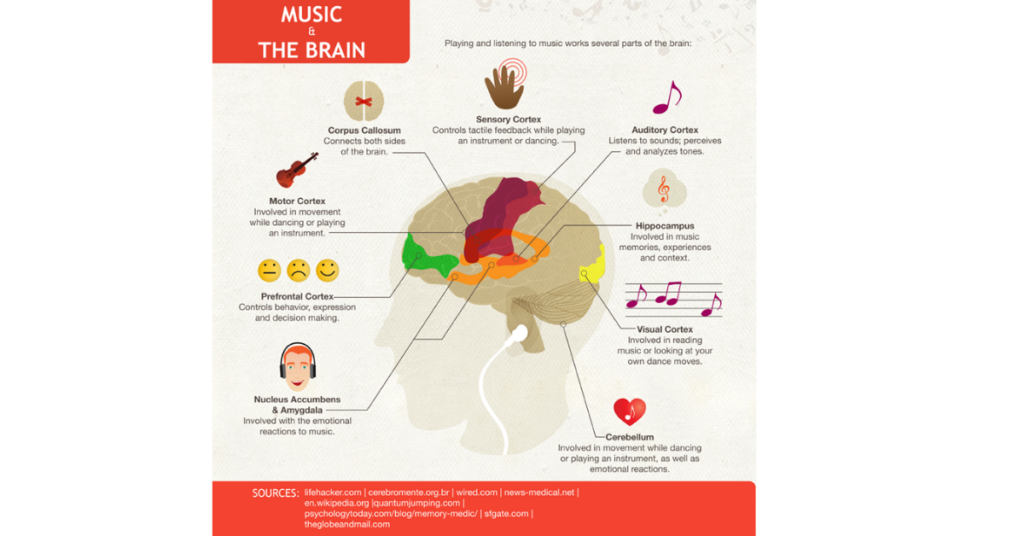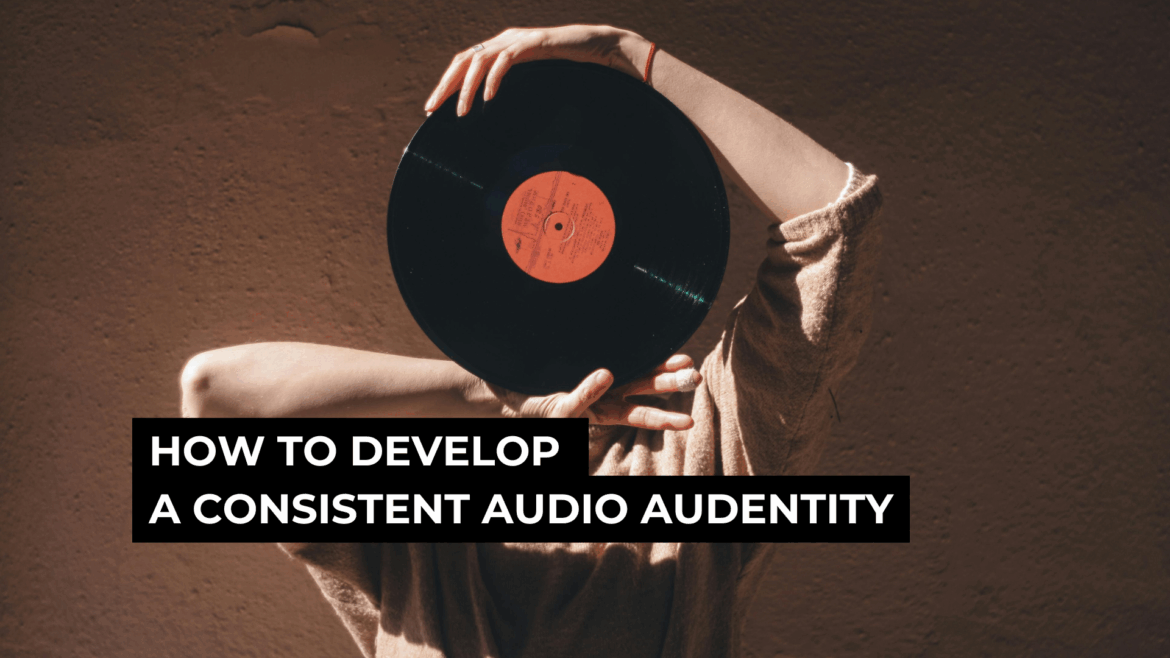In today’s digital world, brands are not just competing visually but also through sound. Crafting a Unique Brand Identity now includes establishing an Audio Identity that resonates deeply with consumers. As more companies recognize the importance of Audio Branding, building a Unique Audio experience has become essential. According to Forbes, audio branding is one of the fastest-growing branding trends, with brands reporting better customer retention and engagement.
This article delves into how brands can Soundtrack your Brand and create an audio experience that’s as memorable and engaging as their visuals.
The Importance of Audio Branding
What is Audio Branding, and Why is it Essential for Brands?
Audio branding is the strategic process of using sound design to shape a brand’s identity, a core part of Brand Development. Just as logos and color schemes reflect a brand’s values, Audio Brand elements such as sonic logos, jingles, and background music define its auditory experience. Research shows that sound influences the limbic system—the part of the brain responsible for emotions and memory. This means that a well-designed Brand Sound can significantly enhance customer recall and loyalty.
How Audio Branding Strengthens Brand Recall and Recognition
Think of Netflix’s “ta-dum,” or McDonald’s jingle—these Unique Audio cues create immediate recognition and establish emotional connections with consumers. Consistency in audio branding is crucial for brand recall; studies indicate that audio can improve memory retention by up to 60%. Establishing a recognizable audio identity can be as important as a visual logo for building Brand Sound consistency.
Real-World Examples of Successful Audio Branding
Netflix: The “ta-dum” sound is now instantly linked with excitement and adventure, capturing the essence of its streaming platform.
McDonald’s: Their “I’m Lovin’ It” jingle brings about feelings of familiarity and happiness, representing the brand’s global appeal.
TikTok: TikTok’s sounds are practically everywhere. From the “TikTok on the clock” sound to the catchy audio clips that go viral every day, TikTok has mastered the art of sound bites. Their audio branding makes the app’s experience memorable, setting the tone for the fun, fast-paced world of short videos.
Apple Music: Apple has nailed that cool, futuristic vibe across all its products, and Apple Music is no different. With its sleek sound design, the app’s tone feels just as polished and innovative as the brand itself, making you feel like you’re stepping into the future with every listen.
WhatsApp: You probably know the iconic WhatsApp “ping” that pops up every time you get a message. It’s short, sweet, and super recognizable, making WhatsApp feel familiar and easygoing. That sound alone says “WhatsApp” before you even look at your phone.
The Psychology of Audio Branding
How different sounds and styles influence emotions and memory
Certain sounds evoke specific emotional responses. A slow, soothing sound design may convey calmness, while a faster rhythm might feel energizing. Sound connects deeply with audiences’ emotions, and audio branding can foster loyalty when it aligns with the audience’s values and moods. Strategic Brand Development through sound is increasingly seen as essential for reaching emotional connection milestones, a vital aspect of modern branding. The article from shifted suggests that 70% of consumers feel more connected to brands that use music aligning with their values and mood.

Connecting Soundscapes with Target Audience Demographics and Psychographics
Understanding audience demographics and psychographics helps brands fine-tune their audio brand. For instance, sound design that appeals to a youthful audience may lean toward trendy genres, while luxury brands might focus on minimalist soundscapes. TikTok’s report shows that 65% of users are more likely to engage with brands using consistent audio cues across channels.
Incorporating music into formats like audiobooks and podcasts can elevate your brand’s audio identity. This will simply create a more engaging and memorable experience for your audience. Selecting the right music for audiobooks is crucial, as it helps set the tone, supports the narrative, and enhances emotional impact. Podcasts, on the other hand, can benefit from background music that complements the conversation, making it feel more dynamic and cohesive. For tips on how to effectively choose music for audiobooks, check out our article at Bensound.
How to Adopt a Bold Sonic Branding
Elements of a Brand’s Audio Identity
To adopt a bold sonic branding, a brand’s audio identity should center around a few key elements. First, there’s the sonic logo—a short, memorable sound or sequence that instantly brings the brand to mind. This is often the quickest way for a brand to make an audio connection with its audience.
Then, music and style choices come into play; brands might choose instrumental, vocal, or mixed tracks depending on the emotion and message they want to convey. This selection forms the core of the brand’s sound design and must align with its overall personality.
Consistency across platforms is essential, as a unified audio identity strengthens brand recognition and ensures the message stays clear and familiar, reinforcing strategic brand development.
Finally, voice and tone are key to building a distinctive brand sound. The choice of voice—whether warm, authoritative, friendly, or quirky—adds depth to the audio identity, creating a memorable experience that audiences can connect with and recognize across different media.
Choosing Between Instrumental, Vocal, or Mixed Tracks Based on Brand Message
Selecting the right type of track helps communicate your brand sound effectively. A unique brand targeting professionals may prefer instrumental soundscapes, while a younger target audience might engage better with vocal tracks that match their culture and lifestyle.
The Role of Consistency in Audio Branding Across Different Channels
Brand build consistency is a crucial aspect of developing a recognizable audio identity. From social media to retail spaces, using the same audio brand elements across channels establishes familiarity, which fosters trust. A cohesive audio branding strategy across platforms can increase brand recognition by up to 30%.
Developing a Unique Soundtrack for a Brand
Creating a unique soundtrack for your brand requires an understanding of the values and emotions your brand wants to convey. Begin by asking questions like, “What emotions should the sound evoke?” and “What kind of personality does our brand embody?”
Steps to Defining the Desired Audio Identity Based on Brand Values and Messaging
Identify Brand Values: Choose sounds that reflect your brand’s core attributes.
Select Key Emotions: Decide whether your brand should evoke excitement, calmness, reliability, or other emotions.
Brainstorm: Consider mood boards or sample tracks to generate ideas and refine your brand sound identity.
Crafting a Sonic Logo, Jingle, or Theme Song That Reflects Brand Personality
A sonic logo or jingle is an audio signature that’s instantly recognizable. To create an effective unique audio element, focus on memorable and rhythmic sounds. Soundtracks for brands need a careful balance of uniqueness and recognizability, which aids in brand build and audience retention.
Technology and Tools for Creating Audio Branding
Today, brands have a wide array of tools and resources at their disposal to create effective audio branding. Software like Logic Pro and Ableton offers extensive customization options, enabling brands to craft unique sound designs tailored to their specific needs.
For companies aiming for a truly distinctive sound, audio branding agencies offer specialized services, working closely with brands to create a professional, customized audio identity that’s entirely unique and aligned with the brand’s personality. These agencies bring in-depth expertise to build a soundscape that resonates authentically with the brand’s target audience.
Using Royalty-Free Music and Sound Libraries as an Affordable Starting Point
Starting with royalty-free options is cost-effective for testing different audio brand concepts. Bensound’s stock music library offers a range of unique audio tracks that match various branding needs, allowing companies to test different sound design ideas before committing to a final brand sound.

Evolving a Brand’s Audio Identity Over Time
As brands evolve, so too should their audio branding. Adapting sound for new campaigns, products, or target audiences helps brands stay fresh while retaining their core audio identity.
Adjusting an audio brand over time requires retaining certain key elements while updating others to align with a brand’s evolution. For example, brands can refresh a unique brand sound by keeping a familiar melody or tone but incorporating updated instrumentation.
Avoiding Common Pitfalls When Refreshing Audio Identity While Maintaining Consistency
When refreshing audio, it’s essential to maintain familiarity. Brands that update their audio identity too drastically risk confusing or alienating consumers. Subtle changes are often the best approach to evolving while maintaining brand loyalty.Netflix’s “ta-dum” is an excellent example of strategic brand development in audio. Although it’s been updated over time, the iconic sound still resonates with the brand’s adventurous and cinematic qualities.
Creating a uniqueaudio identity is a powerful way to make your brand memorable and strengthen its connection with your audience. By developing a consistent sound design that reflects your brand’s values and resonates emotionally with your audience, you can create a powerful tool for brand recognition. With the right tools, creativity, and a clear understanding of your brand’s goals, you can soundtrack your brand and establish a lasting audio identity that sets you apart.

Comments are closed.